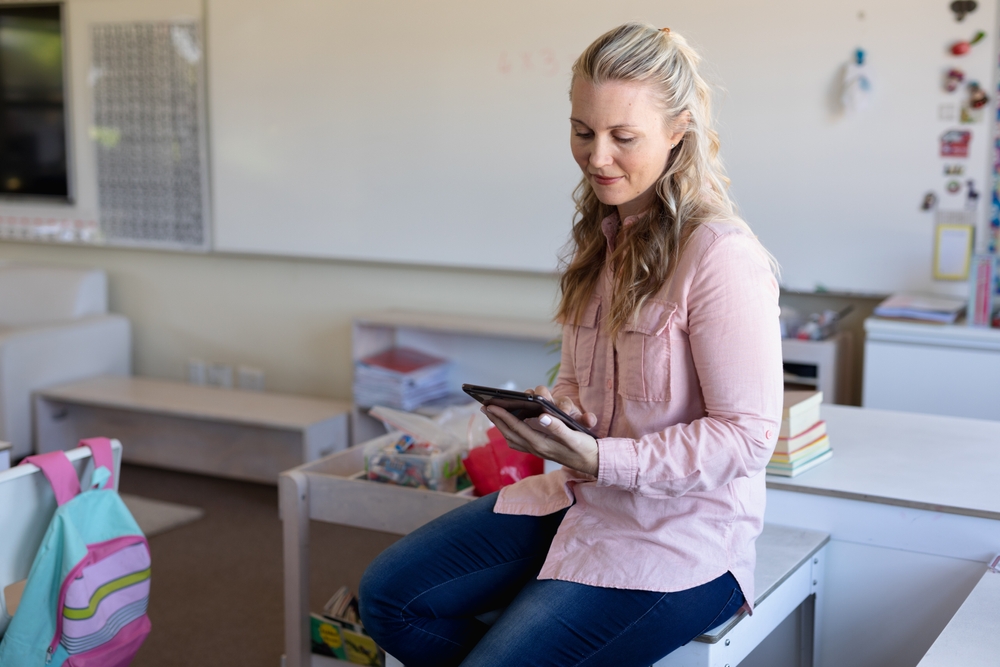3 min read
What is the DfE Connect The Classroom programme and how can you benefit?
Access to reliable and high-speed internet has become crucial for educational institutions that want to fully embrace the benefits of technology for...
4 min read
Richard Sambrook Smith 16-Nov-2023 13:11:34

The Connect The Classroom programme, funded and administered by the DfE, has broken down the first barrier to facilitating modern EdTech solutions for staff and students - strong internet access. Modern and robust Wi-Fi isn’t something all schools have been able to benefit from, often due to affordability or a lack of proper guidance and support with choosing and installing a suitable network. For some schools 'early adoption' of technology has now placed them behind the developmental curve, and in need of playing catch-up to ensure they can support the increased use of EdTech.
With the DfE planning on terminating the programme in 2025, there isn’t much time left for eligible schools to get the ball rolling. At Novatia, we provide support and guidance for those wanting to apply, ensuring the application and implementation process is streamlined and effective (more on this later). For now, we want to focus on how Connect The Classroom supports more immersive and dynamic learning for students in UK schools, academies and MATs.
So what exactly do we mean by immersive and dynamic learning? These two innovative approaches have been making a splash in the education sector thanks to their student engagement capabilities, with both believed to even show signs of improving information retention.
Of the two, dynamic learning is perhaps more common, with the technology involved in immersive learning often being more expensive and complex. Dynamic learning is a personalised approach that adapts to individual learners' needs and interests. It utilises data to track progress, providing personalised feedback and learning activities. In dynamic learning environments, the content is constantly changing and evolving, ensuring that learners remain motivated and engaged throughout their educational journey. Examples of dynamic learning applications include:
DreamBox Learning: This personalised learning software helps students learn maths at their own pace.
Khan Academy: This online platform offers personalised learning modules in a variety of subjects, including maths, science, and English.
IXL Learning: This adaptive learning platform provides students with personalised practice problems in a variety of subjects.
Carnegie Learning: This company offers a variety of dynamic learning products, including maths and science software and intelligent tutoring systems.
Immersive learning takes traditional educational methods and flips them on their head. By placing learners in simulated or real-world environments, students can interact with learning materials in a hands-on manner. The standout benefit of immersive learning is its unique capabilities and interactive approach, warranting assumptions of being more engaging and memorable for students when compared to conventional whiteboards and textbooks. Examples of immersive learning applications include:
Google Earth VR: Students can explore the world from above in VR, and even visit historical sites and natural wonders.
Bodyswaps: Students can practise soft skills such as public speaking and customer service in VR simulations.
Prisms VR: Students can learn maths concepts spatially through hands-on problem-solving in VR.
Immerse: Students can practise speaking and listening to a new language in VR conversations with native speakers.
Factory42: Students can learn about conservation and the environment through educational XR games.
The future of education is impossible to predict, but as technology continues to evolve and infrastructure for these learning approaches becomes more accessible, it's likely that more schools will aim to implement more immersive and dynamic learning. Perhaps unsurprisingly, the applications that facilitate both of these learning approaches are powerful and require specific hardware and software for them to run properly.
From the offset, many of these applications will require appropriate download speeds for not only the initial installation, but also for updating them as updates and patches are rolled out every so often. The hardware itself that is often required for immersive learning, specifically VR, will also need updating. VR headsets, touch controllers, cameras and sensors are all pieces of tech that have regular updates, no different to our mobile phones.
With that being said, the most demanding feature of immersive applications, from an internet connectivity perspective, is the downloading and streaming of large amounts of data such as 3D models and videos. Dynamic learning applications also typically require internet access, so that they can track student progress and deliver personalised learning activities. All of these applications that require internet access recommend using a high-speed internet connection, such as Wi-Fi or Ethernet, when using them. Whereas 5 years ago a typical primary school might have aspired towards a device ratio of 1 to every 4 pupils (and some of those in a traditional, wired IT suite), we are now seeing schools pushing from 1:2 to 1:1 on a regular basis.
Connect The Classroom can play an important role in supporting immersive and dynamic learning by providing UK schools with the necessary connectivity and resources. By having robust, high speed and highly available Wi-Fi access points and ‘core’ and ‘edge’ network switches, schools can facilitate applications that are more demanding and require strong internet connection. It lays the foundations for schools wishing to digitally transform and implement new EdTech solutions to improve all aspects of operations, from teaching and learning to staff wellbeing.
As previously mentioned, Novatia help to support UK schools who believe they may be eligible for the Connect The Classroom programme. We help identify eligibility, provide guidance on the application process, and offer full support with the funding and implementation of new Wi-Fi and new network connectivity. We have a straight-forward 3 step approach that can support you through the whole process.
1) Identify your specific requirements: Following your letter from the DfE confirming eligibility for a new Wi-Fi solution, we’ll visit you to determine the specific requirements of your school to improve your wireless network.
2) Provide quotation and support with procurement: We will provide a quotation, using the DfE Cost Matrix and Technical Summary.
3) Supply and install the solution: We will implement the solution, including the Acceptance Testing as required by the DfE to release the funding, and handover to you with training and full documentation.
If you’d like to find out more about how we can support you with the Connect The Classroom programme, contact us today and a member of our team will be in touch for a friendly chat about your requirements and how we can help.

3 min read
Access to reliable and high-speed internet has become crucial for educational institutions that want to fully embrace the benefits of technology for...
.png)
When it comes to school construction projects, technological infrastructure is of paramount importance. From smart classrooms to data management...

1 min read
Across all age groups, teachers take on a role that can be incredibly rewarding but also highly demanding. There is pressure that stems from various...